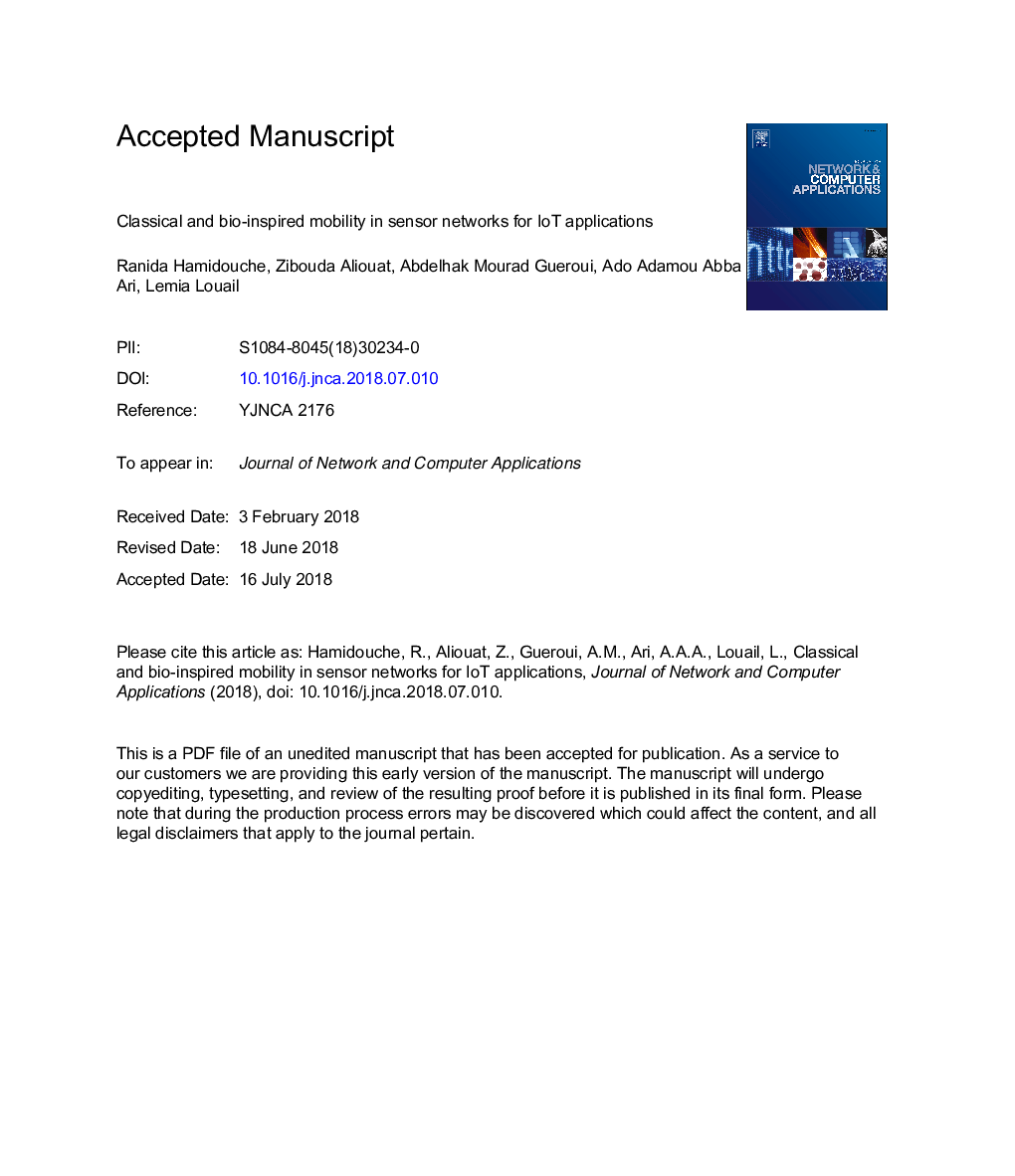| Article ID | Journal | Published Year | Pages | File Type |
|---|---|---|---|---|
| 6884641 | Journal of Network and Computer Applications | 2018 | 46 Pages |
Abstract
With the emergence of Internet of Things (IoT) technology, a huge number of sensor based applications are going to be deployed. Thus, due to their valuable contribution, these sensors have to operate consistently and fulfill their task efficiently. To this end, the communications they involve must be optimal to comply with the expected requirements of IoT users. Bio-inspired computing paradigm has exhibited its capability to offer the best outcomes in information communications over wireless sensor network and vehicular ad hoc network environments. Providing mobility to sensor nodes in these networks enables to substantially improving ability of data sensing through energy saving, and data delivery through node proximity collecting. Indeed, this improvement is still also of great importance in IoT sensor environments. This work aims at increasing the knowledge of the readers by providing sufficient and comprehensive backgrounds in biologically inspired algorithms used for satisfactorily solving challenges posed by different sensors' mobility schemes in the context of IoT applications. Therefore, we give a global overview of static and mobile sensor node strategies with details related to Mobile Wireless Sensor Network (MWSN) enabling technologies. A set of routing protocols based on nodes' mobility will be succinctly examined according to classical domain as well as to bio-inspired one, in order to bring out what should be suitable for IoT applications depending on sensor nodes as building blocks.
Related Topics
Physical Sciences and Engineering
Computer Science
Computer Networks and Communications
Authors
Ranida Hamidouche, Zibouda Aliouat, Abdelhak Mourad Gueroui, Ado Adamou Abba Ari, Lemia Louail,
